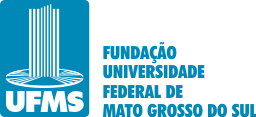Use este identificador para citar ou linkar para este item:
https://repositorio.ufms.br/handle/123456789/11818Registro completo de metadados
| Campo DC | Valor | Idioma |
|---|---|---|
| dc.creator | SELMA GONÇALVES PARÉ | - |
| dc.date.accessioned | 2025-04-20T01:13:02Z | - |
| dc.date.available | 2025-04-20T01:13:02Z | - |
| dc.date.issued | 2025 | pt_BR |
| dc.identifier.uri | https://repositorio.ufms.br/handle/123456789/11818 | - |
| dc.description.abstract | This dissertation is linked to the Postgraduate Program in Education, area of concentration in Social Education, line of research “Educational practices, teacher/educator training in school and non-school spaces”, of the Federal University of Mato Grosso do Sul, Pantanal Câmpus (UFMS/CPAN), and its theme is Aesthetic Education, with Paulo Freire's thought as the object of research. The problematization arose from the following question: what contributions can Paulo Freire's thought offer us to understand Aesthetic Education and the conceptualization of Aesthetic Teaching? Based on this, the general objective consists of: examining Paulo Freire's contributions to Aesthetic Teaching and the specificity of this objective covers: conceptualizing Aesthetic Education and the characteristics of the pedagogical practices that make it up; presenting the notion of Aesthetic Teaching; identifying aesthetic propositions in Paulo Freire's texts that address experiences that led him to a passion for teaching and that address his vision of pedagogical practices and teaching and expanding reflections on Aesthetic Teaching in contemporary times. The research adopts a theoretical-bibliographical methodology, with a qualitative approach based on Freirian dialogicity and the approximation of his work with Aesthetic Education and Aesthetic Teaching. Aesthetic Education is a form of training whose aim is to expand the existential questions of the human being, promoting the development of aspects such as sensitivity, taste, preference, empathy, observation and perception, intuition, wonder and indignation, as well as an appreciation for the relationship with art languages developed throughout human history. Pedagogy of the Oppressed and Pedagogy of Autonomy. The results of the analysis showed that Aesthetic Teaching is creative teaching, encompassing characteristics such as acceptance, affection and empathy, which is not dissociated from the realms of politics and ethics, encouraging freedom and autonomy in the formation of creative and sensitive subjects in their reflections on the self, the other, the world and the objects of knowledge. A creative teaching profession, sensitive to the beauty of educational practice, which is concerned about how its witness to humanity will be presented within the aesthetic and ethical rehearsal of creation. | - |
| dc.language.iso | pt_BR | pt_BR |
| dc.publisher | Fundação Universidade Federal de Mato Grosso do Sul | pt_BR |
| dc.rights | Acesso Aberto | pt_BR |
| dc.subject | . | - |
| dc.title | ESTÉTICA E DOCÊNCIA ESTÉTICA NO PENSAMENTO EDUCACIONAL FREIRIANO: UM ESTUDO TEÓRICO-BIBLIOGRÁFICO QUALITATIVO | pt_BR |
| dc.type | Dissertação | pt_BR |
| dc.contributor.advisor1 | Aline de Novaes Conceicao | - |
| dc.description.resumo | A presente dissertação vincula-se ao Programa de Pós-Graduação em Educação, área de concentração em Educação Social, linha de pesquisa “Práticas educativas, formação de professores(as)/educadores(as) em espaços escolares e não escolares”, da Universidade Federal de Mato Grosso do Sul, Câmpus do Pantanal (UFMS/CPAN), e tem como tema a Educação Estética, tendo como objeto de pesquisa o pensamento de Paulo Freire. A problematização surgiu a partir da seguinte questão: quais contribuições o pensamento freiriano pode oferecer para entendermos a Educação Estética e a conceituação de Docência Estética? A partir disso, o objetivo geral consiste em: examinar as contribuições de Paulo Freire para uma Docência Estética e a especificidade desse objetivo abrange: conceituar a Educação Estética e as características das práticas pedagógicas que a compõem; apresentar a noção de Docência Estética; identificar proposições estéticas nos escritos freirianos que abordam experiências que o levaram à paixão pela docência e que tratam a sua visão sobre práticas pedagógicas e docência e ampliar reflexões sobre a Docência Estética na contemporaneidade. A pesquisa adota uma metodologia teórico-bibliográfica, com uma abordagem qualitativa pautada na dialogicidade freiriana e na aproximação de sua obra com a Educação Estética e a Docência Estética. A Educação Estética é uma formação cujo objetivo é expandir as questões existenciais do ser humano, promovendo o desenvolvimento de aspectos como a sensibilidade, o gosto, a preferência, a empatia, a observação e a percepção, a intuição, o maravilhamento e a indignação, bem como o apreço pela relação com linguagens da arte elaboradas no decorrer da história da humanidade. A Educação Estética busca refletir sobre as interações e práticas entre professores, estudante e os objetos de conhecimento, bem como sobre o ensino, a aprendizagem, a escola e a sociedade. A análise foi realizada por meio da leitura, apropriação e recontextualização de duas obras de Paulo Freire, Pedagogia do Oprimido e Pedagogia da Autonomia. Os resultados das análises evidenciaram a Docência Estética como uma docência criativa, que abrange características como o acolhimento, a afetividade e a empatia, que não se dissocia dos domínios da política e da ética, incentivando a liberdade e a autonomia na formação de sujeitos criativos e sensíveis em suas reflexões sobre o eu, o outro, o mundo e os objetos de conhecimento. Uma docência criativa, sensível à boniteza da prática educativa, que se inquieta sobre como seu testemunho da humanidade será apresentado dentro do ensaio estético e ético da criação. | pt_BR |
| dc.publisher.country | Brasil | pt_BR |
| dc.publisher.initials | UFMS | pt_BR |
| Aparece nas coleções: | Programa de Pós-graduação em Educação (Campus de Corumbá) | |
Arquivos associados a este item:
| Arquivo | Tamanho | Formato | |
|---|---|---|---|
| 2025_DISSERTAÇÃO_SELMA_FINAL_DEFESA.pdf | 1,87 MB | Adobe PDF | Visualizar/Abrir |
Os itens no repositório estão protegidos por copyright, com todos os direitos reservados, salvo quando é indicado o contrário.

